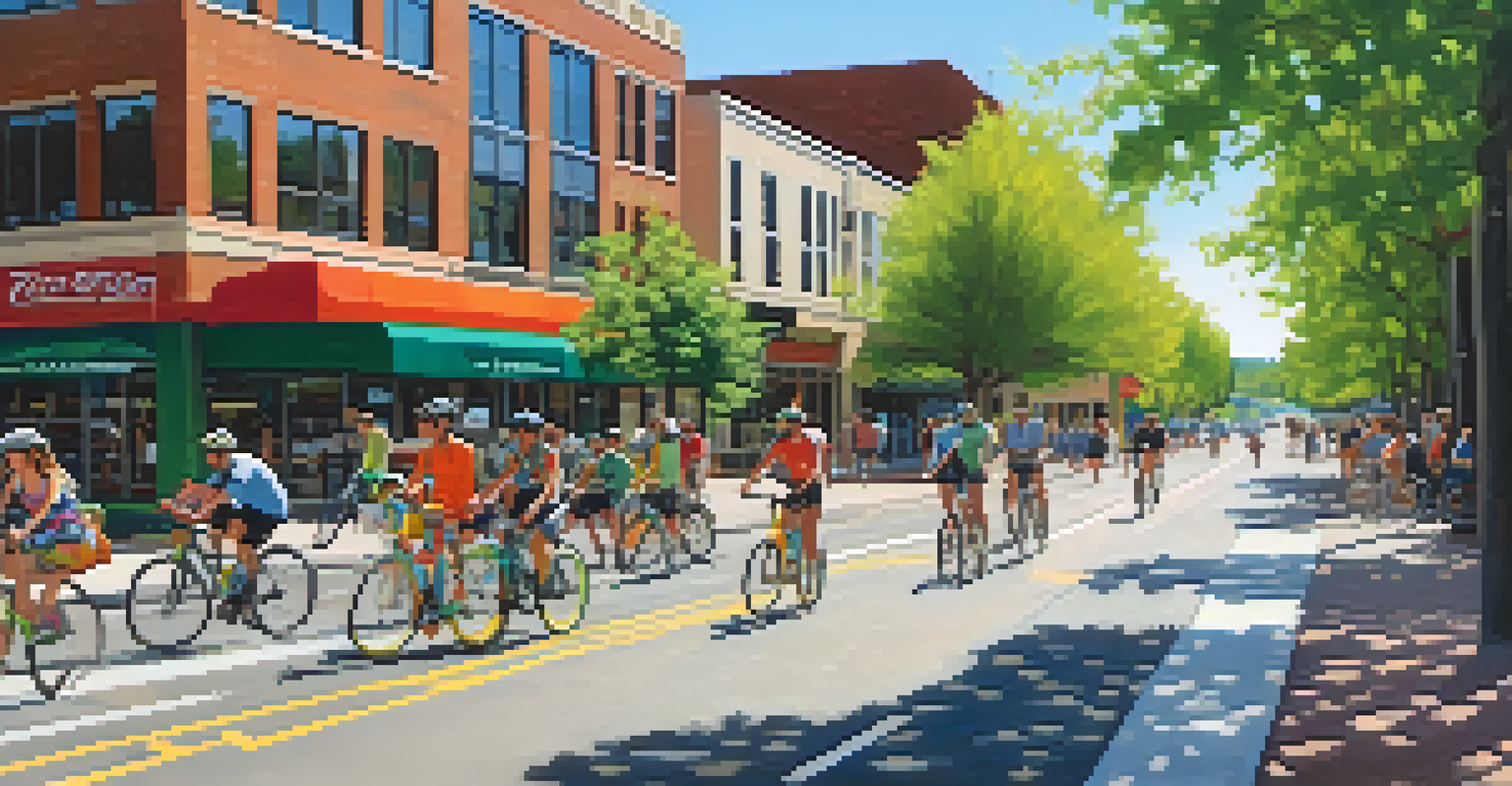The Goals of Boulder’s Climate Action Plan Explained

Introduction to Boulder’s Climate Action Plan
Boulder’s Climate Action Plan (CAP) is a strategic framework designed to address climate change and promote sustainability within the community. It aims to reduce greenhouse gas emissions and enhance resilience to climate impacts. Understanding the goals of this plan is essential for residents and stakeholders alike, as it shapes the future of the city.
The greatest threat to our planet is the belief that someone else will save it.
The CAP sets ambitious targets, including a commitment to achieving net-zero emissions by 2050. This goal is not just an environmental necessity; it's also about fostering a healthier community. By prioritizing sustainability, Boulder is taking a proactive approach to environmental stewardship.
In this article, we'll break down the specific goals outlined in the CAP, providing insights into how they affect both the community and the planet. With clear objectives, Boulder is paving the way for a more sustainable future, and it's essential for everyone to be on board with these initiatives.
Reducing Greenhouse Gas Emissions
A primary goal of Boulder’s Climate Action Plan is to significantly reduce greenhouse gas emissions across all sectors. This includes transportation, residential, and commercial activities, which are major contributors to pollution. By targeting these areas, the city aims to create a cleaner and healthier environment.

For instance, the plan encourages the use of public transportation, biking, and walking, which not only cuts emissions but also promotes healthier lifestyles. Additionally, it supports the transition to renewable energy sources like solar and wind, making sustainable options more accessible to residents.
Reducing Emissions for a Healthier City
Boulder's Climate Action Plan aims to significantly reduce greenhouse gas emissions through initiatives that promote sustainable transportation and energy efficiency.
Engaging the community in energy efficiency practices is also a key focus. Through incentives and educational programs, Boulder aims to empower residents and businesses to take meaningful action in reducing their carbon footprints.
Enhancing Energy Efficiency in Buildings
Another critical goal is improving energy efficiency in both new and existing buildings. The CAP emphasizes retrofitting older structures and implementing energy-efficient designs in new developments. This not only helps reduce emissions but also lowers utility bills for residents and businesses.
We won't have a society if we destroy the environment.
For example, Boulder promotes the use of energy-efficient appliances and smart home technology to optimize energy use. These innovations can lead to significant savings and a decrease in overall energy consumption, making a positive impact on the environment.
By setting strict building codes and offering incentives for energy-efficient upgrades, Boulder is fostering a culture of sustainability. The ultimate aim is to create a community where energy efficiency is the norm, leading to long-term benefits for both the planet and its inhabitants.
Promoting Renewable Energy Sources
Boulder’s Climate Action Plan places a strong emphasis on the transition to renewable energy sources. By aiming for 100% renewable energy for city operations by 2030, Boulder is setting a powerful example for other cities. This shift is crucial for decreasing reliance on fossil fuels and mitigating climate change.
The city encourages residents to adopt renewable energy solutions, such as solar panels, through rebates and financing options. This not only makes it easier for homeowners to go green but also stimulates local jobs in the renewable energy sector.
Transitioning to Renewable Energy
The city is committed to achieving 100% renewable energy for its operations by 2030, encouraging residents to adopt solar solutions and investing in community solar projects.
Moreover, Boulder is actively investing in community solar projects, making renewable energy accessible to all residents, including those who may not have suitable rooftops for solar installation. This inclusive approach ensures that everyone can benefit from clean energy.
Fostering Sustainable Transportation Alternatives
Sustainable transportation is a cornerstone of Boulder’s Climate Action Plan. The goal is to reduce vehicle emissions by promoting alternatives such as public transit, cycling, and walking. These strategies not only cut down on pollution but also improve overall public health by encouraging active lifestyles.
To facilitate this, Boulder is expanding its bike lanes, improving pedestrian pathways, and enhancing public transit options. These upgrades make it easier and safer for residents to choose greener modes of transportation, thereby reducing their carbon footprint.
Additionally, the city is exploring electric vehicle (EV) infrastructure, including more charging stations. By supporting the use of electric cars, Boulder aims to further decrease emissions associated with traditional gasoline vehicles.
Building Community Resilience to Climate Change
A significant goal of the Climate Action Plan is to enhance community resilience to the impacts of climate change. This means preparing for extreme weather events, rising temperatures, and other environmental challenges that could affect Boulder. By fostering resilience, the city aims to protect its residents and infrastructure.
Boulder is investing in green infrastructure, such as parks and urban forests, which can help mitigate heat and manage stormwater. These natural solutions not only improve the local ecosystem but also provide recreational spaces for the community.
Building Community Resilience
Boulder's CAP focuses on enhancing community resilience to climate change through green infrastructure and education, preparing residents for environmental challenges.
Moreover, the city is focused on educating residents about climate preparedness, ensuring they have the resources and knowledge to respond effectively to climate-related challenges. This proactive approach is key to maintaining a thriving, resilient community.
Encouraging Community Engagement and Education
Community engagement is vital to the success of Boulder’s Climate Action Plan. The city recognizes that for sustainability efforts to be effective, residents need to be informed and involved. Educational programs and outreach initiatives aim to empower individuals to take action within their own lives.
Events like workshops, community forums, and sustainability fairs provide platforms for residents to learn about climate issues and solutions. These gatherings foster a sense of community and shared responsibility in tackling climate change.

Additionally, Boulder encourages feedback from residents to continuously improve the CAP. By involving the community in decision-making processes, the city ensures that its goals align with the values and needs of its residents, ultimately leading to greater success in achieving sustainability.
Monitoring Progress and Adjusting Strategies
Finally, a key aspect of Boulder’s Climate Action Plan is the commitment to monitoring progress and adjusting strategies as needed. Climate action is not a one-size-fits-all approach; it requires ongoing evaluation to ensure goals are being met effectively. This adaptability is crucial for long-term success.
The city regularly assesses its emissions data and the effectiveness of various initiatives. By analyzing this information, Boulder can identify what’s working and where improvements are necessary, allowing for timely adjustments to strategies.
This commitment to transparency and accountability helps build trust within the community. Residents can see the tangible impacts of the CAP and understand how their contributions make a difference, encouraging continued engagement in sustainability efforts.